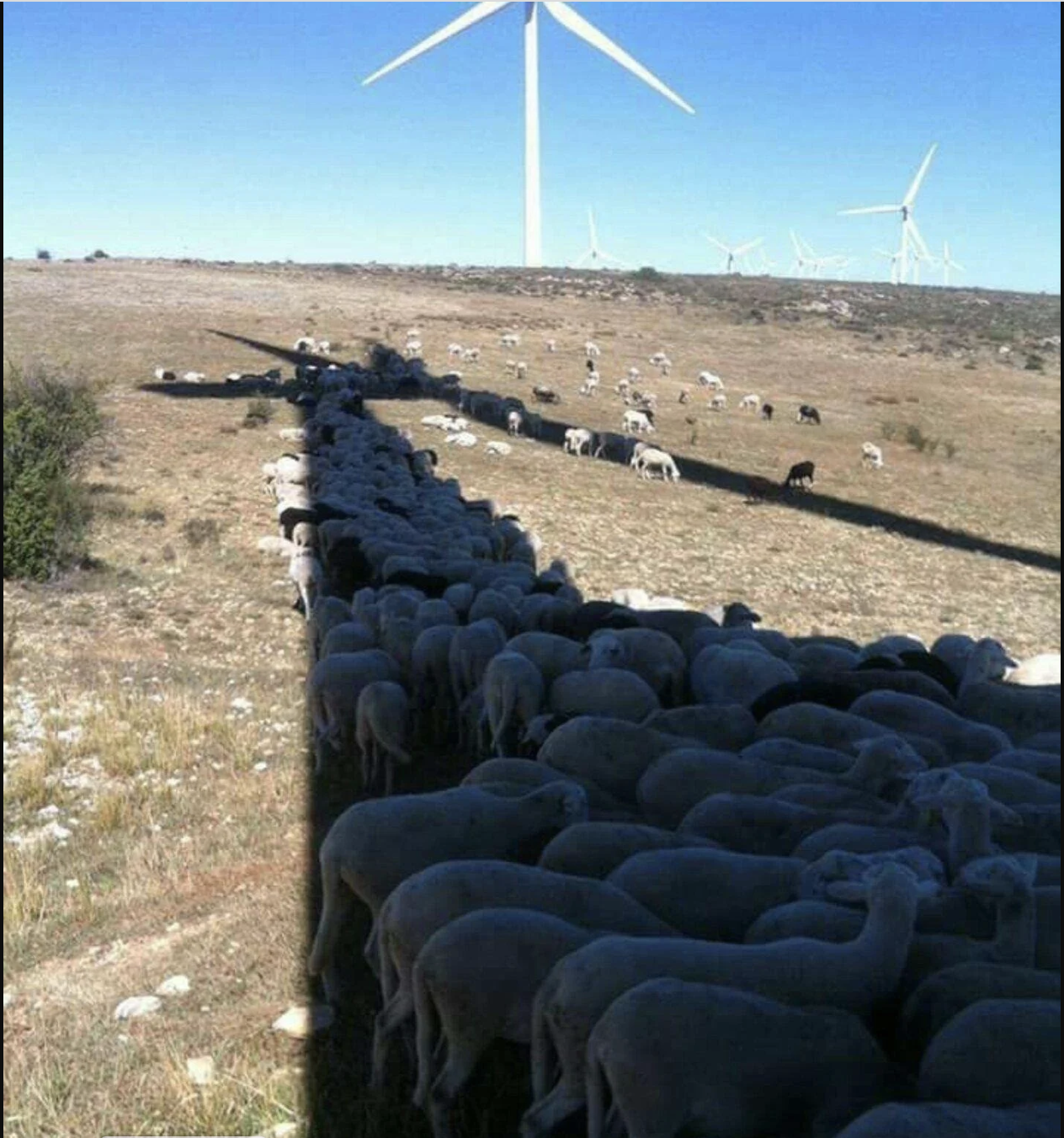• Sheep cooling in the shade of a windmill have more common sense than Australia’s energy regulators and governments
Australian governments, regulators and industry plan to increase eastern Australian electricity transmission capacity and lines by building about 10,000 kilometres of new lines.
Those new lines are a tragic strategy.
They are not vital. They are not the only option.
They are a diversion of money and resources when we have precious, limited time to stop pollution by much more efficient, cheaper and proven solutions.
The lines will cement existing monopolies and inefficiencies, drive up energy prices and create additional energy pollution during construction.
Building 10,000 kilometres of high voltage transmission lines requires millions of kilometres of transport toing and froing during construction with diesel and petrol to fuel the thousands of trucks and vehicle movements.
Building transmission lines requires the cutting down of thousands of trees and plants, grading new roads, diverting rain from where it once fell to feed artesian water reserves and to erode delicate landscapes.
Because wind turbine blades are 20, 30 or more metres long they require thousands of trees and new purpose-made access roads to be built to enable the blades to be delivered to the high ridges and hills where they’re to be built.
So do the transmission lines and the metal structures require new site roads and vegetation clearing.
And to avoid fire bringing down the lines or being lit by the lines during storms the vegetation below transmission lines has to be cleared, then pesticides and poison regularly sprayed to prevent regrowth.
Due to the heat the high voltage transmission lines lose about 8 to 12% of energy in transmission.
And all this infrastructure will be built too late to matter.
The tragedy arises from the failure to plan around the science and solutions canvassed in the UN report of 5 April 2022, and the Intergovernmental Panel on Climate Change (IPCC) report.
The U.N.’s April 2022 report said:
“In the scenarios we assessed, limiting warming to around 1.5°C (2.7°F) requires
global greenhouse gas emissions to peak before 2025 at the latest, and be reduced by 43 per cent by 2030; at the same time, methane would also need to be reduced by about a third. Even if we do this, it is almost inevitable that we will temporarily exceed this temperature threshold but could return to C below it by the end of the century.
“It’s now or never, if we want to limit global warming to 1.5°C (2.7°F)…Without immediate and deep emissions reductions across all sectors, it will be impossible.”
The graphic above is one I made to sum up the little time left for we humans to save ourselves.
In its April 2022 report the UN says we humans have 30 months left to cut the pollution – until 2025 – when the IPCC expects we will lose the slight remaining potential to prevent cascading, out of control, climate collapse.
In this context, given the U.N. advice, it’s madness to plan to build 10,000 kilometres of new transmission lines.
The Australian energy sector, the legislators, the regulators and governments display consistent failure.
Here’s an example this week reported by the ABC:
“New South Wales Treasurer Matt Kean insisted blackouts could be avoided, but urged people to monitor their power usage.
"We're not telling people to turn off the heaters, we're not telling people to turn down their air conditioners or anything like that," he said.
"But people should just be conscious that where they can reduce their use of electricity, that's a good thing for them."
He described the current crisis as an example of "market failure".
Last week Commonwealth, state and territory energy ministers met to discuss the energy concerns hitting much of the east coast, including soaring prices and demand for gas.“
The authors of this systemic failure - AEMO, and other regulators, state and federal energy bodies and their public generators - are also the authors of the plan to build the 10,000 kilometres of high voltage grid lines.
Do we really need their planned 10,000 additional kilometres of pesticide-sprayed high voltage lines, mown grass and plants, tree-clearing, graded access roads? Some love the idea but don’t mention the negatives.
With our money?
All the plan does is keep them at the centre of things, in the way a narcicist wants to exist. What’s the alternative to this bonfire of the vanities?
Solutions and alternatives
The solutions and alternatives exist, are proven, function now.
Local community battery and solar power stations to create and store energy are the solution; almost no transmission loss.
They’re just like the existing plentiful electrical substations already sprinkled through our suburbs but, instead create new, local energy supplied rather than spreading around energy sent from hundreds and thousands of kilometres outside our cities.



